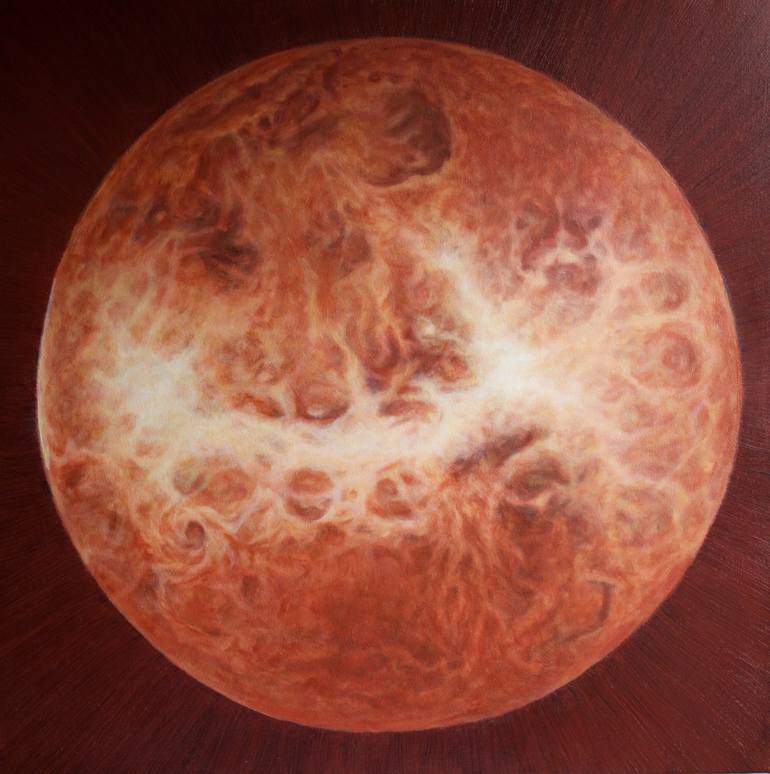


492 Views
0
View In My Room
Painting, Oil on Canvas
Size: 24 W x 24 H x 1.6 D in
Ships in a Box
492 Views
0
Artist Recognition

Artist featured in a collection
ABOUT THE ARTWORK
DETAILS AND DIMENSIONS
SHIPPING AND RETURNS
This painting of the planet Venus is inspired by my work on empathy and gender. It reflects the human struggle with opposites: light and dark, male and female, hot and cold, and resolves these as an intertwining. It can also be seen as a mandala for meditation. 2 May 2017. I showed my painting of V...
Year Created:
2017
Subject:
Styles:
Mediums:
Painting, Oil on Canvas
Rarity:
One-of-a-kind Artwork
Size:
24 W x 24 H x 1.6 D in
Ready to Hang:
Not Applicable
Frame:
Not Framed
Authenticity:
Certificate is Included
Packaging:
Ships in a Box
Delivery Cost:
Shipping is included in price.
Delivery Time:
Typically 5-7 business days for domestic shipments, 10-14 business days for international shipments.
Returns:
14-day return policy. Visit our help section for more information.
Handling:
Ships in a box. Artists are responsible for packaging and adhering to Saatchi Art’s packaging guidelines.
Ships From:
United Kingdom.
Customs:
Shipments from United Kingdom may experience delays due to country's regulations for exporting valuable artworks.
Need more information?
Need more information?
Russell Honeyman
United Kingdom
I paint impressionist realism, using brushes and palette knives, oil and acrylic. My art work often reflects landscape and the body, and sometimes reflects the social and political reality. I've been drawing from life in pastels, pencils and charcoal since my teens. I've been painting since 2007, and have been involved in artists groups in Manchester, Zimbabwe and Brighton. I use creativity to explore my identity, to interpret and meditate on mind, body, nature, the world. I paint and draw and write and sometimes combine all three in digital mediums. I'm a Dad and I live in Brighton. My parents were both artists.
Artist Recognition

Artist featured by Saatchi Art in a collection
Why Saatchi Art?
Thousands of
5-Star Reviews
We deliver world-class customer service to all of our art buyers.
Global Selection of Original Art
Explore an unparalleled artwork selection from around the world.
Satisfaction Guaranteed
Our 14-day satisfaction guarantee allows you to buy with confidence.
Support Emerging Artists
We pay our artists more on every sale than other galleries.
